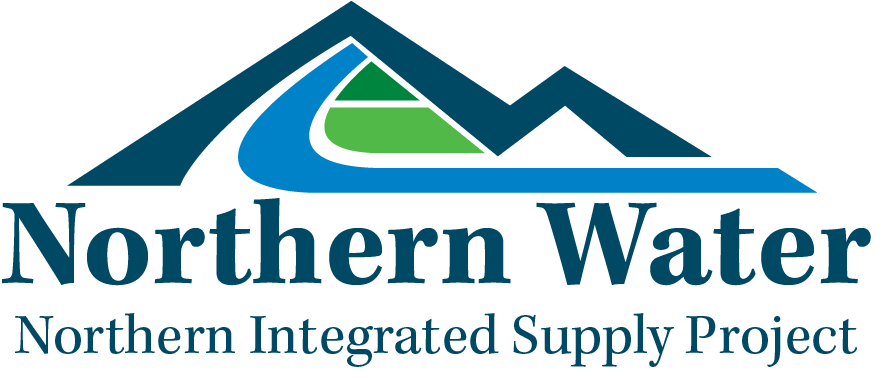FAQs
Frequently Asked Questions about NISP
Is this project needed?
Yes! Northern Water is responsible for providing reliable water that is essential to our everyday lives. One of our jobs is to provide water for a million people today and the half-million more that will be here by 2050.
Whether the destination is the bathtub faucet you use to bathe your kids, or your favorite craft brewery to create your next pint, we manage the water resources that provide every drop.
Why do we need another reservoir? Can’t we just conserve water instead?
While water users are much more efficient now thanks to a focus on conservation, the reality is there is no way to conserve our way to a secure water future. With a growing population and limited water supply, Northern Water must invest in creative strategies that meet future demands sustainably.
Where will the two reservoirs be located?
Glade Reservoir will be located northwest of Fort Collins, while Galeton Reservoir will be northeast of Greeley.
How large will these reservoirs be?
Glade Reservoir will be 5 miles long, 280 feet deep at its deepest, and have the capacity to store 170,000 acre-feet of water – slightly larger than Horsetooth Reservoir. The surface area of Glade Reservoir will be about 1,600 acres when full.
Galeton Reservoir will store about 45,600 acre-feet at full capacity with a maximum depth of approximately 85 feet and a dam length of over 2 miles. The surface area of Galeton Reservoir will be about 2,000 acres when full.
Will Glade Reservoir capturing flows from the Poudre River dry up the river as it flows downstream?
Quite the contrary – as part of our Fish and Wildlife Mitigation and Enhancement Plan approved by Colorado Parks and Wildlife, we’ll release water year-round from Glade Reservoir, which will eliminate existing dry-up points.
This, along with another $60 million in environmental commitments, is credited at least in part for the State Water Quality Division finding that “no significant degradation is expected as part of the project.”
How will the water be delivered from the reservoirs to the participants?
NISP includes burying approximately 80 miles of large, safe, resilient pipelines to enable cooperative water exchanges and delivery to cities, towns and water districts across Northern Colorado.
What kind of steps are being taken to protect the surrounding wildlife and environment as this project moves forward?
The NISP Fish and Wildlife Mitigation and Enhancement Plan – approved by the Colorado Parks and Wildlife Commission, Colorado Water Conservation Board and Gov. John Hickenlooper in 2017 – includes an array of components that address issues raised during the permitting and public comment processes, such as:
- An operational configuration that releases 18 cubic feet per second to 25 cfs year-round from Glade Reservoir to the Poudre River, eliminating existing dry-up points in the river and improving streamflows
- A Poudre River peak-flow operations program that results in little to no diversions during peak flow conditions during 90 percent of years
- Wildlife habitat conservation
- Water quality improvements
- Retrofitting four existing diversion structures to allow fish to migrate freely up and down river – and for flows to continue downstream
- Stream channel and habitat improvements
- Fishery and recreation benefits at Glade Reservoir
Additionally, in the summer of 2018, officials from the Army Corps of Engineers released a Final Environmental Impact Statement outlining the impacts of NISP, as well as three alternative projects. It also looks at the effects to the environment if no action alternative is approved. In addition to marking yet another step in a 15-year federal permitting process, the FEIS showed that no new significant issues have popped up and that the impacts can and will be mitigated.
How safe will the project be?
Glade Reservoir Dam – Multiple safety measures are put in place for any dam project. The dam is being permitted through the Colorado State Engineers Offices, which has strict safety and design standards. The dam is being designed to withstand huge weather events, seismic activities, soil shifts, etc.
Pipelines – The pipelines will be constructed with engineered steel to withstand surges and pressures within the line. The project as a whole will go through a series of quality control measures, monitoring procedures, and checks from regulatory agencies. Some of these items include a hydrostatic test of pipelines above operating pressures, slow filling of the reservoir to ensure stability, testing during construction (concrete strength, compaction requirements, welding, etc.), and many others. The pipeline will automatically shut down in the case of leaks.
Does the project have broad support in the region?
Northern Water is proud that through partnership and collaboration, NISP has earned broad community support and endorsements from dozens of public and elected officials, 30 business, economic development and chamber of commerce organizations, nearly two dozen agricultural organizations, nine water conservancy/conservation districts, and several west slope agencies and organizations representing water interests.
Why has this project taken so long?
Northern Colorado’s future water supply depends on NISP, and that’s why this innovative water supply project has been so thoughtfully developed.
Water supply projects are carefully reviewed by regulatory experts and require extensive permitting and approvals. That’s why Northern Water has spent considerable time and money to conduct careful, detailed and thorough studies that withstand all levels of review and scrutiny.
NISP has been evaluated by every state and federal agency that regulates this type of project and has achieved every permitting and approval milestone to date.
As part of the regulatory review and permitting for NISP, Northern Water sought to implement extensive protections and enhancements to the aquatic and wildlife environment within the Poudre River watershed, and regulatory agencies have approved our plans.
We are proud of the solid work and dedication that has gone into moving this project to this stage. When complete, it will be among the water supply project jewels in the state because NISP demonstrates how people and the environment can both benefit when projects are done properly.
